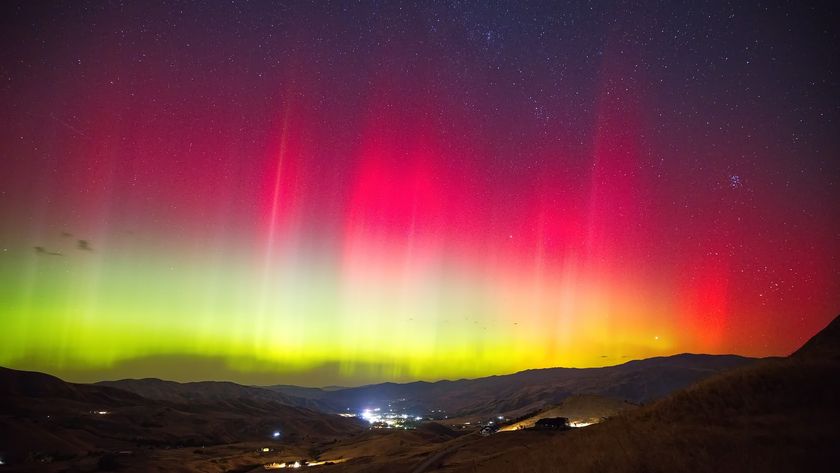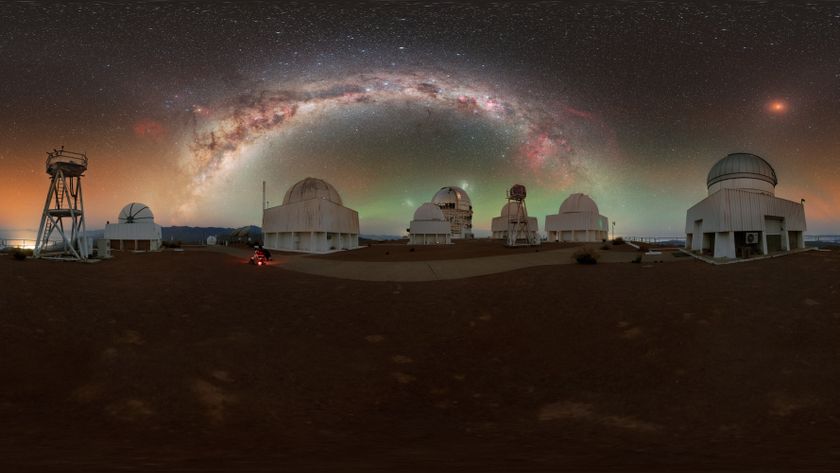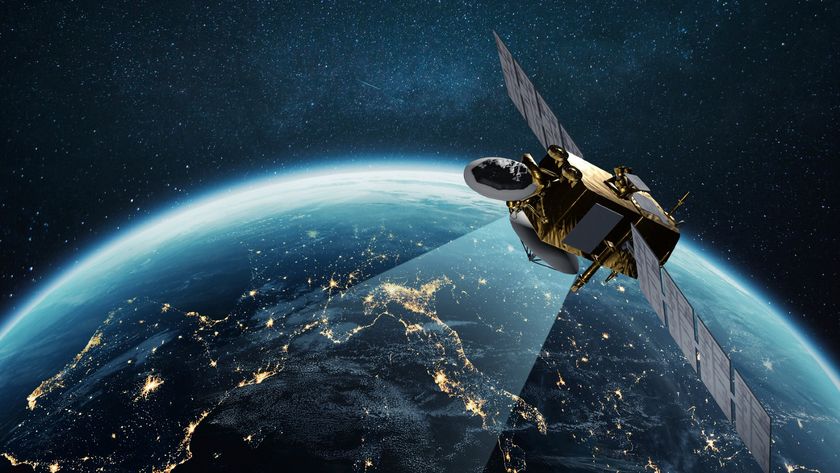Jeff Bezos' Blue Origin Launches and Lands Private Rocket for Third Time
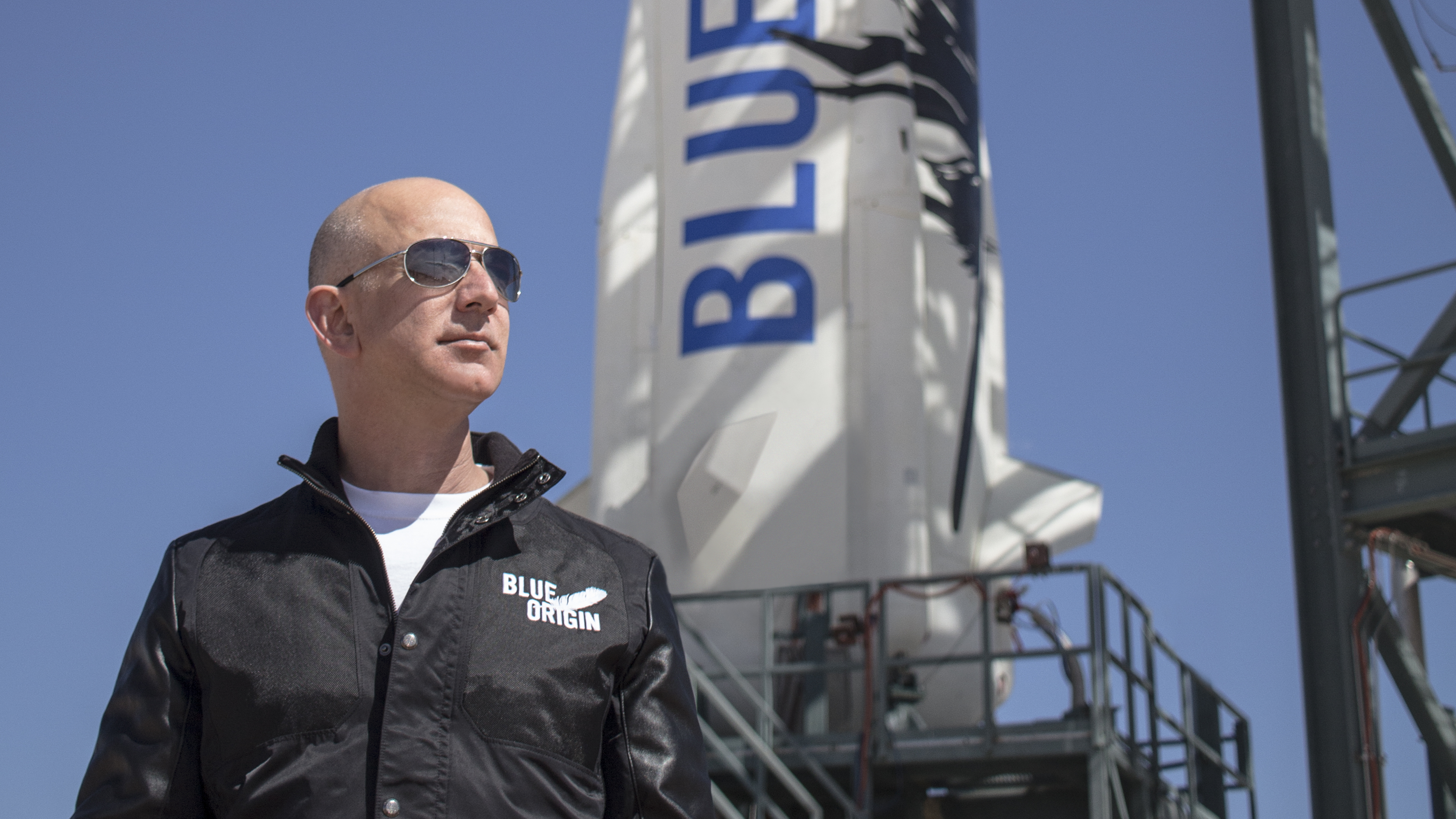
Billionaire Jeff Bezos' private spaceflight company Blue Origin launched a prototype reusable rocket into space and then landed it back on Earth on today (April 2) in an epic third successful test flight in less than five months.
During today's unmanned test, Blue Origin's New Shepard rocket and capsule launched into suborbital space from the company's West Texas test site, its proving ground for reusable boosters. The capsule separated in space and returned to Earth via a parachute, while the New Shepard rocket descended on a plume of fire to stick its third vertical landing. Blue Origin captured this jaw-dropping video of the reusable rocket test , with views from both the ground and air.
"Flawless BE-3 restart and perfect booster landing," Blue Origin founder Jeff Bezos tweeted this morning at 11:18 a.m. EDT (1515 GMT), referring to New Shepard's BE-3 rocket engine. Bezos also confirmed that the crew capsule parachutes successfully deployed, and a few moments later tweeted: "[Crew capsule] touchdown confirmed." Bezos promised that video of the launch, including aerial views, would be released as soon as they could be processed. [See more photos of Blue Origin's reusable rocket launches]
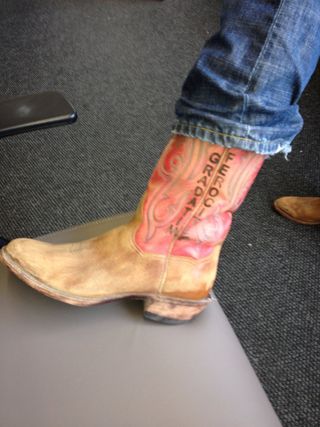
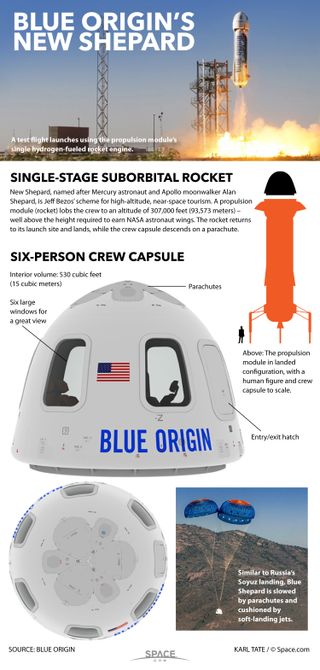
Bezos wore a pair of custom cowboy boots emblazoned with Blue Origin's motto "Gradatum Ferociter" (Step by Step, Ferociously) during the launch. The billionaire wrote on Twitter that the boots, a gift from a friend, brought good luck for the flight.
Saturday's test flight — which Bezos announced via Twitter on Friday (April 1) — marked the third vertical launch and landing demonstration by Blue Origin's New Shepard rocket and capsule since the booster made its first successful vertical landing on Nov. 23, 2015. The rocket made another successful landing on Jan. 22.
Blue Origin plans to use New Shepard and its capsule to launch paying passengers on trips into space, though the company has not yet announced how much such space tourism flights will cost.
The New Shepard rocket and capsule can carry up to six people into space, but not high enough to reach orbit. The suborbital capsule is capable of flying higher than the 62-mile (100 kilometers) boundary between Earth and space, then descends and lands via parachute. After separating from the capsule, the booster uses its thrusters to descend vertically onto a landing pad, where it sets down gently enough to be reused in later launches.
Get the Space.com Newsletter
Breaking space news, the latest updates on rocket launches, skywatching events and more!
In his Friday Twitter posts announcing Saturday's launch, Bezos promised what appeared to be the most ambitious test flight yet for New Shepard and Blue Origin.
The flight, Bezos promised, would be "pushing the envelope" with New Shepard restarting its BE-3 rocket engine just 3,600 feet (1,097 meters) above the ground during its landing.
"Impact in 6 [seconds] if engine doesn't restart & ramp fast," Bezos wrote.
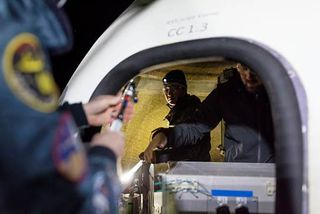
Blue Origin also packed two science experiments onboard the Crew Capsule during the test flight.
One experiment, called the "Box of Rocks" Experiment," was exactly like it sounds: a box of rocks launched into space to observe how the rocks move in weightlessness. The experiment was designed by researchers at the Southwest Research Institute to understand how rocky soil on small asteroids moves.
The second experiment, called the Collisions in Dust Experiment, was created by researchers at the University of Central Florida. It included a marble that would be dropped into a bed of dust to study how collisions between particles in the early solar system worked.
By developing a reusable rocket, Blue Origin hopes to lower dramatically the cost of its launches. The company in not alone in this pursuit. Its competitor SpaceX, founded by billionaire entrepreneur Elon Musk, is also pursuing reusable rocket technology for its Falcon 9 rockets.
In December, SpaceX landed the first stage of its orbital Falcon 9 rocket on land, becoming the first entity ever to accomplish this feat during an orbital launch; the company has also made several nearly successful tries to land the booster on an ocean platform. SpaceX, however, has not yet reused a Falcon 9 rocket stage, though the company says that is a goal for 2016.
Email Tariq Malik at tmalik@space.com or follow him @tariqjmalik and Google+. Follow us @Spacedotcom, Facebook and Google+. Original article on Space.com.
Join our Space Forums to keep talking space on the latest missions, night sky and more! And if you have a news tip, correction or comment, let us know at: community@space.com.

Tariq is the Editor-in-Chief of Space.com and joined the team in 2001, first as an intern and staff writer, and later as an editor. He covers human spaceflight, exploration and space science, as well as skywatching and entertainment. He became Space.com's Managing Editor in 2009 and Editor-in-Chief in 2019. Before joining Space.com, Tariq was a staff reporter for The Los Angeles Times covering education and city beats in La Habra, Fullerton and Huntington Beach. In October 2022, Tariq received the Harry Kolcum Award for excellence in space reporting from the National Space Club Florida Committee. He is also an Eagle Scout (yes, he has the Space Exploration merit badge) and went to Space Camp four times as a kid and a fifth time as an adult. He has journalism degrees from the University of Southern California and New York University. You can find Tariq at Space.com and as the co-host to the This Week In Space podcast with space historian Rod Pyle on the TWiT network. To see his latest project, you can follow Tariq on Twitter @tariqjmalik.








